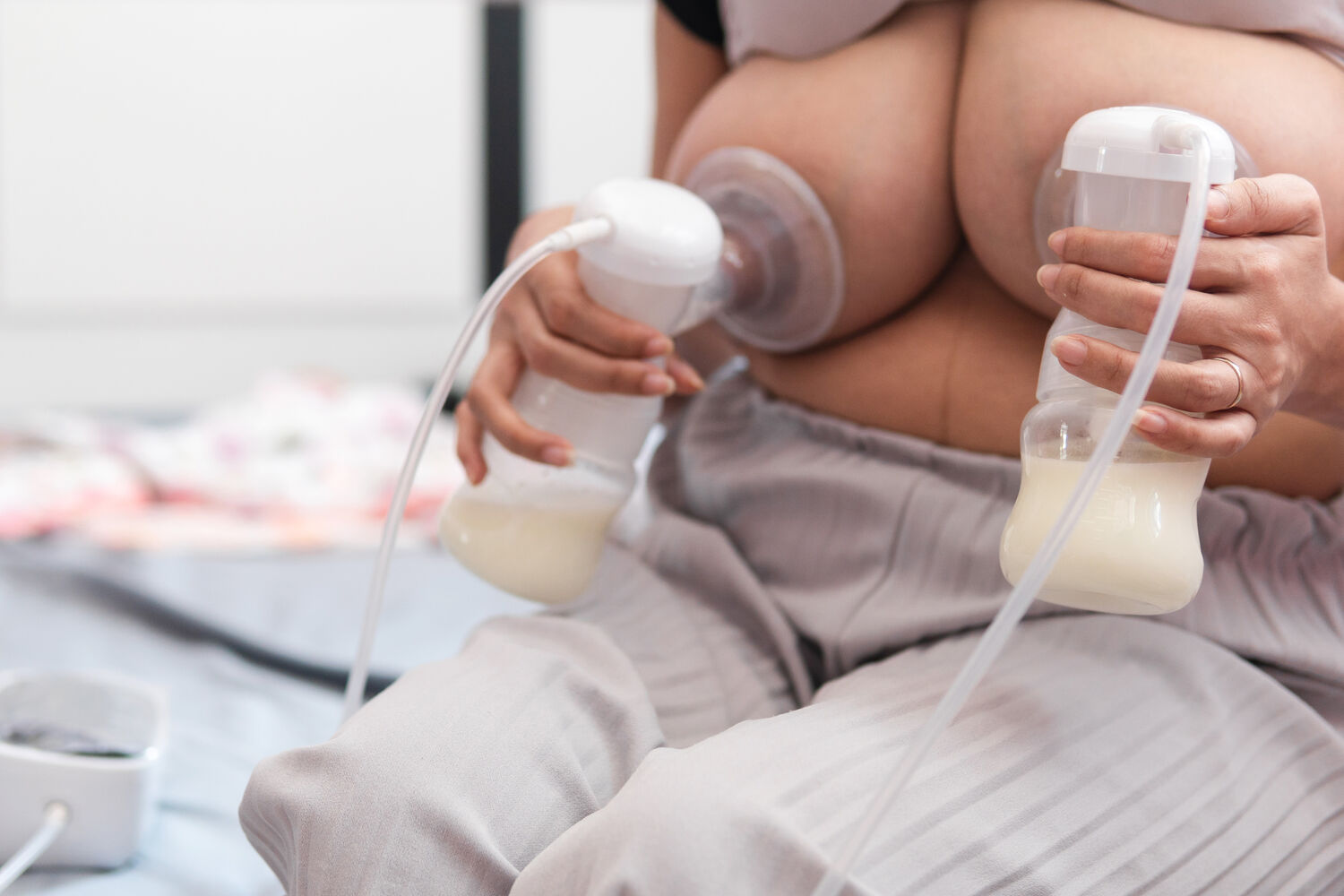Expressing Milk
Information about expressing milk by pump or by hand.
Expressing by Hand
Information about expressing breast milk by hand.
Expressing using a hand or electric breast pump
There is no need to rush to start pumping unless your baby is unable to breastfeed.
- Sterilise your breast pump before first use.
- Clean pump parts in hot soapy water and allow to air dry on a paper towel.
- Sterilise once every 24 hours either by boiling, microwaving, of steam sterilising - this is especially important if the baby is premature or unwell.
- Use a breast pump 48 hours after birth - prior to this hand expressing is encourage
- Clean hands and gently massage your breasts
- You may choose to hand express for 1-2mins to get milk flowing (not an essential step)
- Ensure you choose the right size pump flange for your nipple size as a wrong size pump flange can cause damage and cause trauma to your nipples (Medela sizing handout can help)
- Centre the nipple in the flange and ensure that it moves freely without any rubbing
- Begin pumping on low suction and build up slowly to a comfortable level - if the pump is used correctly it should not cause significant pain
- Express for a maximum of 15-20mins on each side
- Breast compressions can assist with the letdown of milk
- Gently squeeze the breast near the chest wall, not near the nipple
- Compress when the baby pauses feeding or is suckling but not swallowing
- Release and repeat.
- Pump into a clean container – bottle, clean cup, or milk bag.
- Pumping can become very tiring and therefore only pump as required to increase and maintain supply
- Contact the Australian Breastfeeding Association Early Childhood Centre Nurse for further support if require
See below for a suggested pumping routine
| Double Pump | Single Pump |
|---|---|
| Pump for 20 minutes | Pump 10 minutes (Left) then Pump 10 minutes (Right) |
| Rest 10 minutes | Rest 5 minutes |
| Pump for 10 minutes | Pump 10 minutes (Left) then Pump 10 minutes (Right) |
| Rest for 10 minutes | Rest 5 minutes |
| Pump for 10 minutes | Pump 10 minutes (Left) then Pump 10 minutes (Right) |
| Finish | Finish |
Expressing to build supply or to excessively breastfeed
Remember breast milk works on a supply and demand. The more frequently you pump the more breast milk you will make. Expressing takes time and energy and isn’t always needed.
There are a number of reasons you may need to pump:
Baby not breastfeeding
- If a baby does not breastfeed it is important to pump as often as a baby would generally feed, which is generally 8-12 feeds in a 24 hour period
- It is recommended that mothers pump regularly 2-3 hourly and avoid long stretches of 5-6 hours without pumping
- Mothers are encouraged to try and pump at least once overnight to build and maintain supply
Baby needs more milk
- Baby may not be breastfeeding well, supply is slow to build or there is low weight gain it may be helpful to pump for 5-10mins after feeds
- There may not be much breast milk straight after a feed but this will still stimulate the breast to help build supply
- Any available breast milk can be given to your baby as a top up
When to pump and how long
- If baby is not breastfeeding try to mimic their normal feeding patterns and pump 2-4 hourly
- If baby is breastfeeding it may be hard to fit in a pumping session but below are 2 options to help you navigate this
- Pump straight after breastfeed - you may not pump very much milk but it will help with the supply and demand process to help build milk supply.
- Pump between feeds - pump an hour after a breastfeed you will likely make more milk which can be given as a top up for your baby
- You can pump 5-15mins after a breastfeed to help build supply
How much to pump will depend on the reason you are pumping
- Pumping to increase supply or to get a top up - you should pump with no expectation of amount
- Pumping to replace a feed - pump to quota requirements. If you can not reach quota your baby requires you may need to use formula until supply builds (see feeding quota handout)
How to pump more breast milk
- Pump often - 8 or more times in 24 hours
- Breast compression during pumping - compress the breast near the chest wall during pumping to assist with flow. Gentle massage of the breast before pumping can help
- Combination of hand expressing and pumping - can help produce more milk
- Double pumping - is time efficient and helps produce more milk - this is not essential
- Correct flange size - this can affect flow and comfort (see sizing handout)
- Ensure pump suction is not painful - set to the pump strength to where you are comfortable
- Pump at night - prolactin (milk making hormone) levels are higher at night - this will help stimulate milk production
- Power pumping - this can be done by choosing a time during the day to pump frequently over an hour (see power pumping handout)
- Regular skin to skin - help boost milk making hormones
Storing Expressed Breast Milk
Download the following Fact Sheet or refer to the list of websites for recommended storing times for various types of expressed breast milk.
Breast Pump Hire
Breast Pumps are available to hire from mybreastpump.com.au

